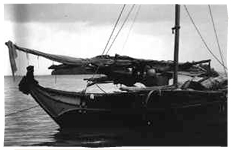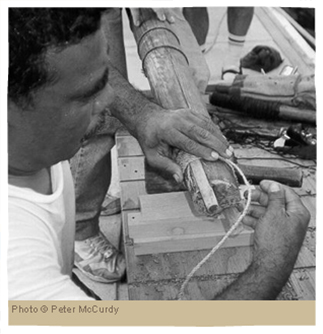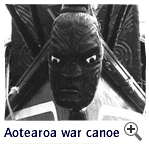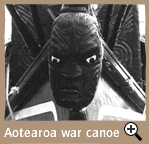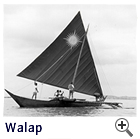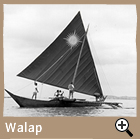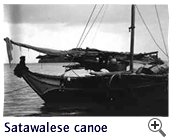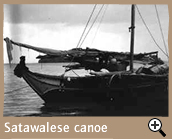The Canoe Is the People
Indigenous Navigation in the Pacific
Building a Canoe
The way a hull GLOSSARY hull - the body of a boat is built depends on the use of the canoe and available materials. You need big trees to build a dugout GLOSSARY dugout - a canoe made by digging out the centre of a log . On islands that have no big hardwood trees, such as the low coral atolls of Western Kiribati GLOSSARY Kiribati - Gilbert, Phoenix, and Line Islands and the Tuamotu chain, pieces of wood are shaped into planks GLOSSARY planks - shaped pieces of wood and fitted together. Other planks are tied from the inside to give support. Before iron nails, Roman and Egyptian ships were made like this too.
These are the two oldest ways to build hulls. People refined them more in the Pacific than in other parts of the world. This enabled them to travel far on the open ocean. By fitting and tying all the parts together, Pacific people made very strong– but they lashed the parts together so that their vakas were flexible GLOSSARY flexible - easy to bend . When sailing, the canoes could absorb the force of the waves better than more rigid GLOSSARY rigid - stiff, hard European boats. The lashings allow the joins between vaka parts to bend rather than break.
If a vaka is used for fishing in lagoons, or if a place rarely has strong winds (like the protected channels and lagoons of the central and western Solomon Islands), it doesn’t need side planks. But if it’s used for voyaging between islands, where the seas are high, side planks or cover boards are necessary. Balance is essential for these vakas. The hull shape and the distance between the two hulls (or hull and outrigger GLOSSARY outrigger - side float ) has to be just right. Carvings on the hulls often have spiritual meaning and are there to protect the vaka and the voyagers.
Aotearoa war canoe
In the past, the largest canoes were for wars or ceremonies, not voyaging. The dugout war canoes of Aotearoa (New Zealand) were usually made from three large pieces fitted tightly together - hull, bow (front), and stern (back). Planks were added to the sides of the dugout. Carvings in the styles of individual iwi (tribes) were put on top of the bow and stern.
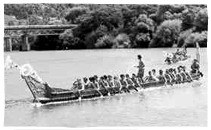
Photo © Peter McCurdy
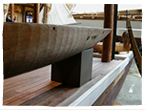
Photo © New Zealand Maritime
Museum
The sharkskin surface on this Maori river canoe and other hulls in Aotearoa makes the hull faster than a smooth hull. Modern military ships and racing boats copy this by adding similar textures to their vessels to decrease friction so they go faster.
Walap
The Marshall Islands walap canoe also has three pieces, but not fixed together in the same way as the Maori war canoe. There are few large trees on the islands, so many planks make up the walap's sides. The outrigger is connected to the main hull in a flexible (loose, easy to bend) way. Like this, it can hit the waves first and ride over them separately from the main hull. This means less stress on the canoe and less drag (the friction of the water against the hull) in the water, so the canoe can go faster. Western designers have copied this clever feature.
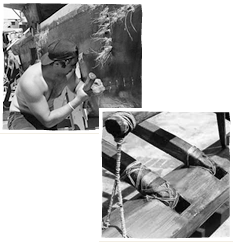
Photo © Peter McCurdy
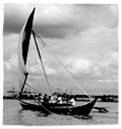
Satawalese canoe
Like the Aotearoa (New Zealand) war canoes, Satawalese canoes are built in three pieces, but they are much smaller because the trees are smaller. Therefore, more planks are added to build up the sides.
